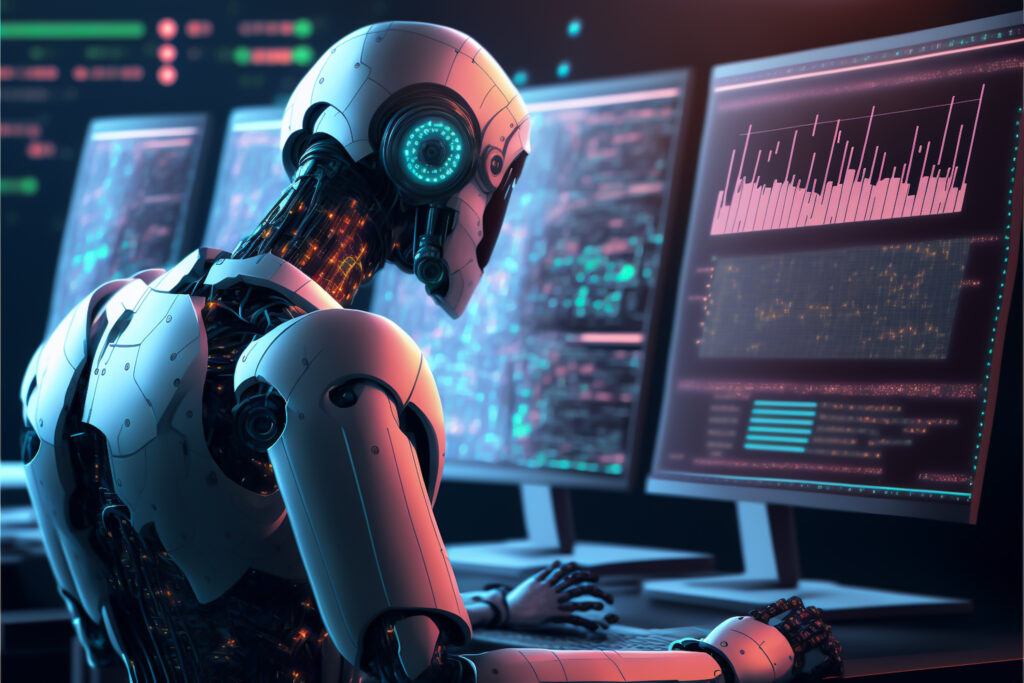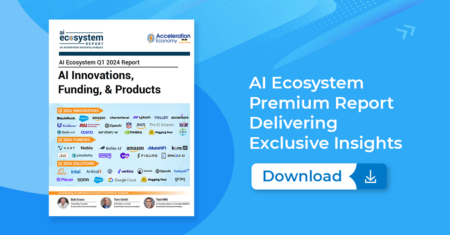The use of artificial intelligence (AI) in security is rapidly increasing as organizations look for new ways to identify and respond to security risks more effectively. By using AI-generated insights, companies can improve the speed and effectiveness of their security teams and reduce security costs.
In this analysis, we will explore how AI is being used to identify and respond to security risks as well as the benefits and challenges that cybersecurity leaders and practitioners can expect to experience when using AI for this purpose.
AI on the Front Lines
A key way that AI is being used to identify security risks is through the use of machine learning (ML) algorithms. These algorithms can analyze large amounts of data, such as network logs and system events, to identify patterns and anomalies that may indicate a security threat.
Additionally, AI can be used to analyze real-time data, allowing organizations to quickly identify and respond to potential threats. Allowing the AI to respond at machine speed not only reduces the time to identify threats but also frees staff from managing these tasks. The point is to allow machines to do what they are good at (analyzing data at scale) and allow people to do what they are good at (making connections and drawing conclusions).
AI can also be used to identify security risks through the use of natural language processing (NLP) to analyze unstructured data, such as social media posts. This can help organizations to identify potential security risks that may not be identified through traditional security methods. For instance, a financial institution may use AI to monitor social media for a post like, “Just received an email from @BankName asking for my account number and password. I think it’s a phishing scam.”
The AI can use NLP techniques such as sentiment analysis, text classification, named entity recognition, and keyword analysis to process this post and determine that the sentiment of the post is negative, indicating a potential security risk to the company’s reputation and classify the post as a security issue, specifically a phishing attempt. The AI can then alert the security team of the financial institution so they can take appropriate action, such as investigating the email and potentially warning customers to be on the lookout for similar scams.
AI as a Response Tool
Once security risks have been identified, AI can be used to automatically respond to threats, such as by shutting down a compromised system or blocking malicious IP addresses. AI can also be used to generate alerts and notifications, allowing security teams to quickly respond to potential threats. As we discussed earlier, AI is very good at quickly sifting through logs and identifying patterns, something that is difficult and time-consuming for humans. This time savings can be especially valuable when your security team is freed up to do other things like long-tail URL analysis or looking for correlations among lower priority alerts that may otherwise go uninvestigated, looking for connections that need a human eye.
In the physical security world, AI can be used to analyze data from security cameras and other surveillance systems to help identify and track potential suspects. AI algorithms can detect and track objects, such as people or vehicles, in real-time video feeds. This can help security personnel monitor large areas more efficiently and quickly respond to potential threats.
You can also take advantage of AI-powered facial recognition technology to identify individuals and match them against a database of authorized personnel or known security threats, helping to secure access to restricted areas and prevent unauthorized entry. For larger, more densely populated areas, AI-powered video analytics can provide advanced insights into such things as crowd density and flow analysis, which can help security personnel make better decisions and improve overall physical security.
Which companies are the most important vendors in cybersecurity? Click here to see the Acceleration Economy Top 10 Cybersecurity Shortlist, as selected by our expert team of practitioner analysts.
AI’s Challenges
There are challenges that need to be considered when using AI to respond to security risks. One potential risk is the possibility of bias or errors in the data used to train the AI. Bias in AI refers to an error in the algorithms or models that results in unequal treatment of certain groups. Bias can have serious consequences, particularly in applications such as criminal justice, healthcare, and hiring, where AI systems are used to make important decisions. One example is gender bias in natural language processing models. This can occur when the models are trained on large amounts of text data that contain gender stereotypes and gender-specific language patterns. This can result in AI systems that perpetuate gender biases, such as assuming that women are more likely to be caretakers and men are more likely to be leaders.
In cybersecurity, biased AI algorithms can produce higher rates of false positive identifications, which can result in miscategorizing legitimate traffic or malicious traffic. False positives occur when the system identifies a non-existent threat or incorrectly classifies benign data as malicious. This can result in the blocking of legitimate traffic or the failure to detect actual security threats, which can result in security breaches and overall reduced effectiveness of security systems.
Additionally, organizations will need to have robust and secure data infrastructure in place to support the use of AI in security. Ongoing monitoring and maintenance will be required to ensure that the AI system is working correctly and that any issues are quickly addressed.
Closing Thoughts
In conclusion, the use of AI-generated insights to respond to security risks has the potential to reduce the number of false positives and false negatives, resulting in more accurate and efficient security, and the overall cost of security. However, it is important for leaders to consider the potential risks and challenges associated with using AI in security, and to have robust and secure data infrastructure in place to support its use. By taking these factors into account, organizations can more effectively use AI to identify and respond to security risks and improve the overall security of their business.









